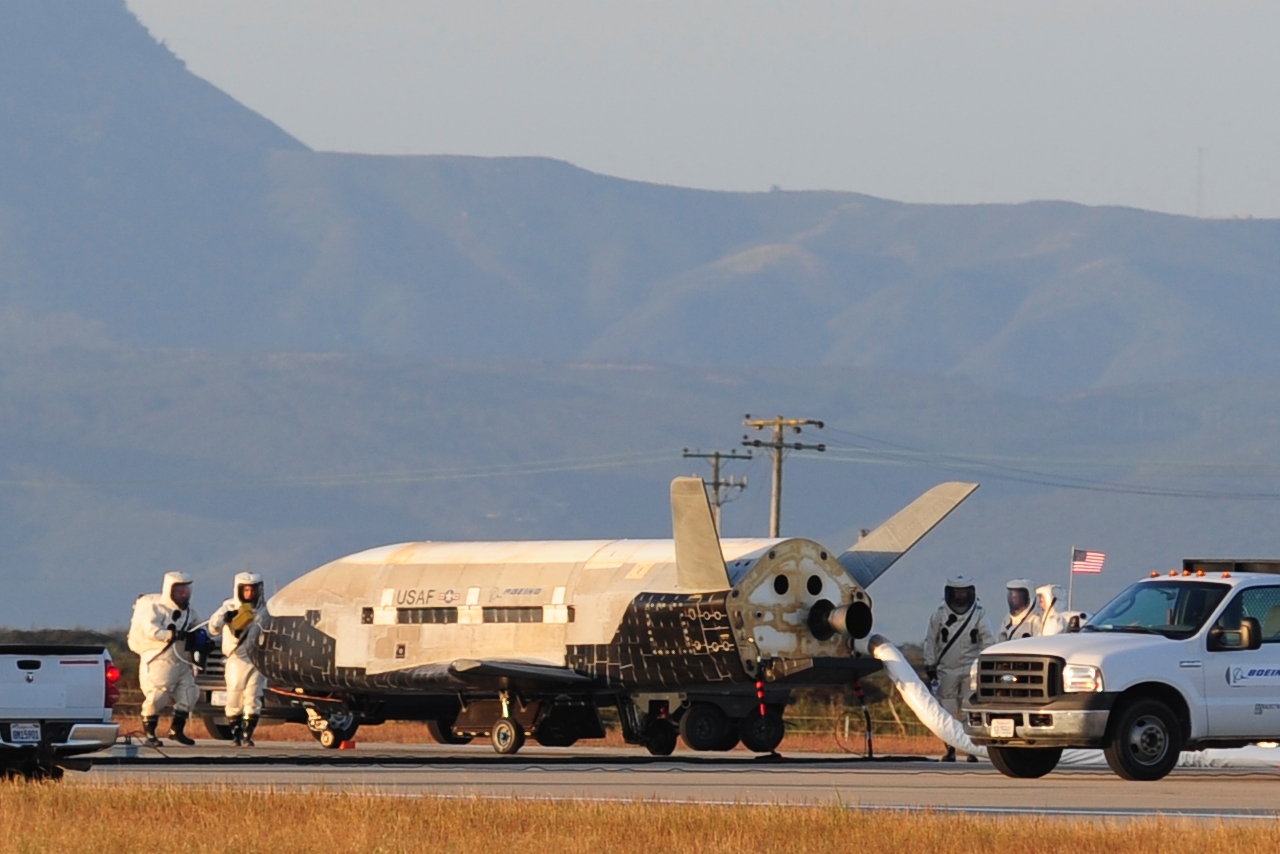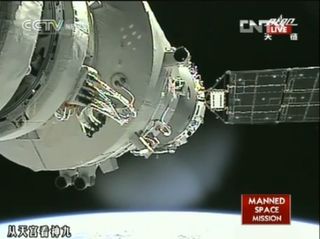
Any celebrations China's space officials kicked off after launching the nation's first female astronaut this month may have been dampened a few hours later by the news that another spacecraft — an American military space plane — had returned to Earth a world away.
Just hours after China's Shenzhou 9 capsule roared into space on June 16 with three astronauts aboard, including the nation's first female spaceflyer Liu Yang — the U.S. Air Force's robotic X-37B space plane touched down in California after 15 months orbiting Earth on a hush-hush mission.
The Air Force insists the X-37B is just testing out technologies for future satellites, but China has a deep suspicion of the vehicle and its activities, experts say.
"The X-37B is actually very controversial over there," said Brian Weeden, a technical adviser with the Secure World Foundation and a former orbital analyst with the Air Force. "They view it as a space weapon." [Video: X-37B Lands at Vandenberg]
Mysterious mission
The X-37B looks like NASA's now-retired space shuttle, only much smaller. The vehicle measures just 29 feet (8.8 meters) long and 15 feet (4.5 m) wide, with a payload bay about the size of a pickup truck bed. For comparison, two entire X-37Bs could fit inside the payload bay of a space shuttle.
The X-37B, also known as Orbital Test Vehicle-2 (OTV-2), launched on March 5, 2011, from Florida's Cape Canaveral Air Force Station. Its flight was the second-ever space mission for the X-37B program; the first was flown by OTV-2's sister ship, OTV-1.
Get the Space.com Newsletter
Breaking space news, the latest updates on rocket launches, skywatching events and more!
OTV-1 stayed aloft for 225 days in 2010, well under the supposed 270-day orbital limit for the space plane. But OTV-2 smashed that limit, zipping around our planet for 469 days.
The X-37B's payloads and mission details are classified, so it's unclear exactly what OTV-2 was doing up there for so long. But Weeden thinks the Air Force's claim about technology-testing is broadly accurate.
Based on OTV-2's orbit — which is also classified but was figured out by keen-eyed amateur astronomers — Weeden reckons the space plane may have been staring down at Afghanistan and the Middle East with some brand-new spy gear, perhaps sensors that can see in wavelengths beyond the visible spectrum.
But China seems dubious of the Air Force's explanation, suspecting that X-37B missions might have a more aggressive intent.
"Industry analysts said the spacecraft could be a precursor to an orbiting weapon, capable of dropping bombs or disabling enemy satellites as it circles the globe," China's state-run Xinhua news agency wrote on June 17, a day after OTV-2 touched down at Vandenberg Air Force Base.
China views the X-37B "as a perfect example of the U.S. developing a space weapon program while stating in public that they're doing no such thing," Weeden told SPACE.com.

Room for cooperation?
China is an emerging space power, a country that's ramping up its spaceflight activities and capabilities.
The Shenzhou 9 capsule, for example, linked up with the unmanned Tiangong 1 module on June 18 and again on June 24, making China just the third country — after the United States and Russia — to pull off a manned space docking.
Shenzhou 9's mission, which is expected to wrap up by June 29, is viewed as a key step in China's plan to build a permanently staffed space station in Earth orbit by 2020. The country hopes to land a taikonaut on the moon sometime after that, and it's also developing its own satellite-navigation system so as not to be dependent on the U.S.-military-run GPS network.
China's suspicions about the X-37B may not make American officials too happy, for they've stated a desire to engage the Chinese more fully on space issues going forward.
"The U.S. says they're very interested in military-military dialogue with China on space activities, and further cooperation with China in a few different areas," Weeden said.
Follow SPACE.com senior writer Mike Wall on Twitter @michaeldwall or SPACE.com @Spacedotcom. We're also on Facebook and Google+.
Join our Space Forums to keep talking space on the latest missions, night sky and more! And if you have a news tip, correction or comment, let us know at: community@space.com.

Michael Wall is a Senior Space Writer with Space.com and joined the team in 2010. He primarily covers exoplanets, spaceflight and military space, but has been known to dabble in the space art beat. His book about the search for alien life, "Out There," was published on Nov. 13, 2018. Before becoming a science writer, Michael worked as a herpetologist and wildlife biologist. He has a Ph.D. in evolutionary biology from the University of Sydney, Australia, a bachelor's degree from the University of Arizona, and a graduate certificate in science writing from the University of California, Santa Cruz. To find out what his latest project is, you can follow Michael on Twitter.